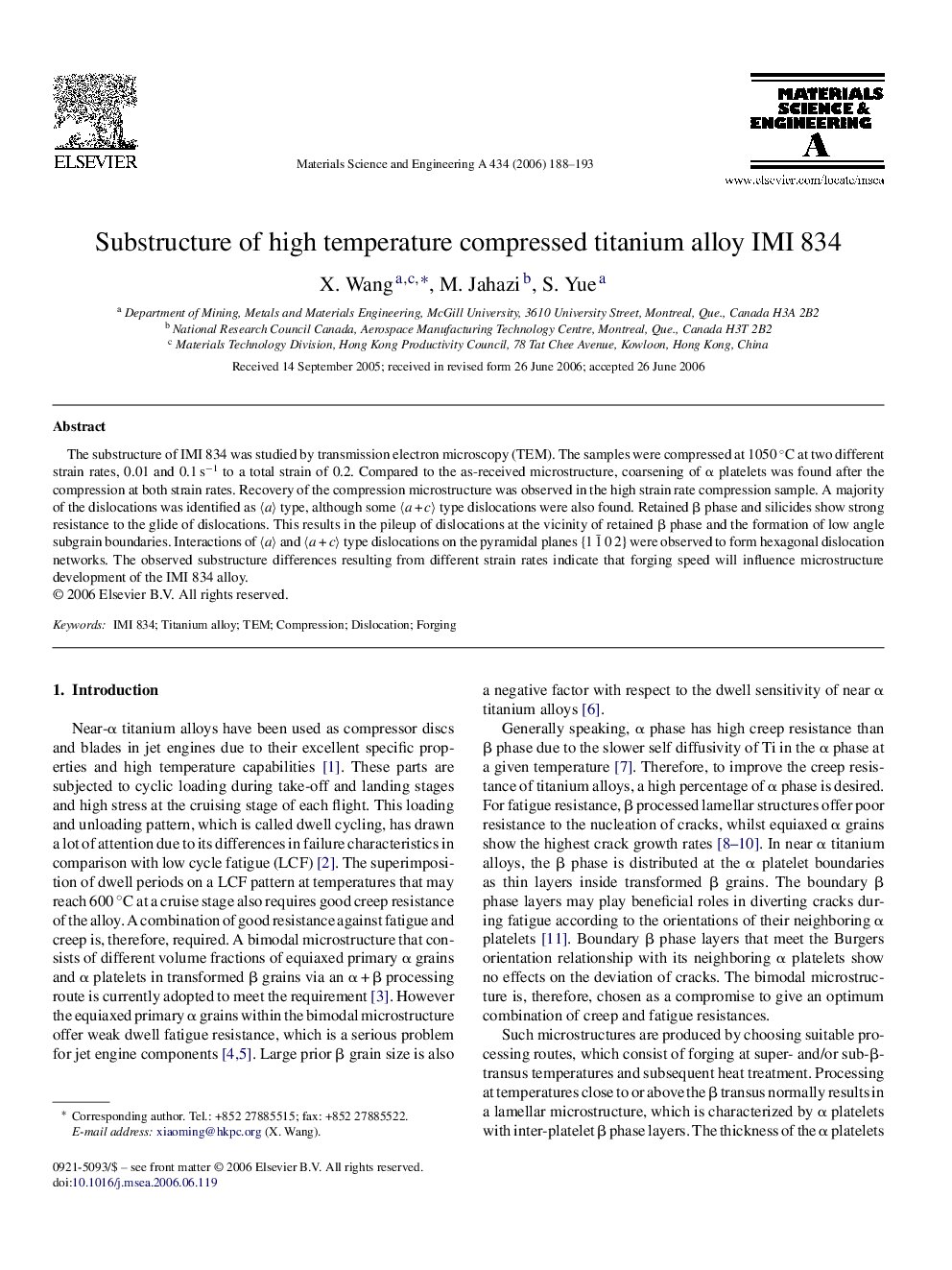| Article ID | Journal | Published Year | Pages | File Type |
|---|---|---|---|---|
| 1584910 | Materials Science and Engineering: A | 2006 | 6 Pages |
The substructure of IMI 834 was studied by transmission electron microscopy (TEM). The samples were compressed at 1050 °C at two different strain rates, 0.01 and 0.1 s−1 to a total strain of 0.2. Compared to the as-received microstructure, coarsening of α platelets was found after the compression at both strain rates. Recovery of the compression microstructure was observed in the high strain rate compression sample. A majority of the dislocations was identified as 〈a〉 type, although some 〈a + c〉 type dislocations were also found. Retained β phase and silicides show strong resistance to the glide of dislocations. This results in the pileup of dislocations at the vicinity of retained β phase and the formation of low angle subgrain boundaries. Interactions of 〈a〉 and 〈a + c 〉 type dislocations on the pyramidal planes {1 1¯ 0 2} were observed to form hexagonal dislocation networks. The observed substructure differences resulting from different strain rates indicate that forging speed will influence microstructure development of the IMI 834 alloy.
